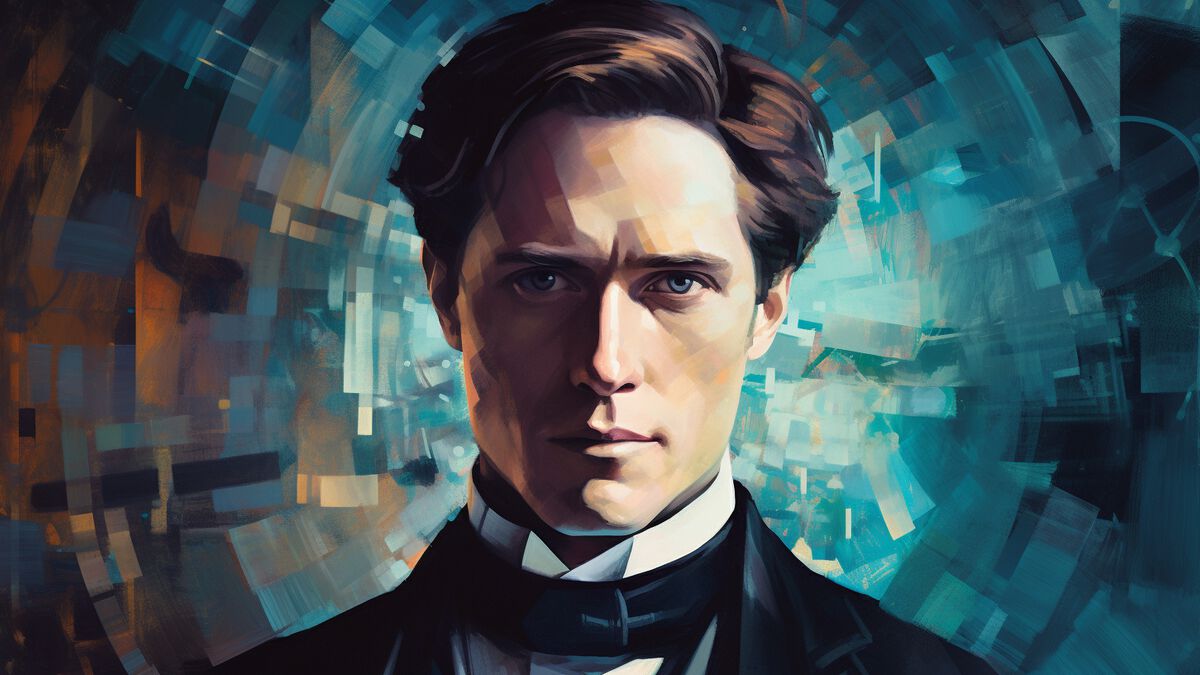Would Joseph Smith Be a Transhumanist?
Lincoln Cannon
23 September 2023 (updated 3 January 2026)
In our contemporary landscape replete with scientific discovery and engineering marvels, the prospect of technological resurrection presents fascinating possibilities. Specifically, imagine technological resurrection of Joseph Smith, the founder and first prophet of Mormonism. And consider, if that were to become possible, would the resurrected Joseph identify or at least act as a Transhumanist?
To answer this question, we should first note the core principles of Transhumanism. Fundamentally, it’s advocacy for the ethical use of technology to enhance human abilities. It’s the proposition that humanity can and should increase our physical and mental capacities indefinitely, toward superintelligence and perpetual life.
Such ideas were not foreign to Joseph’s teachings. His prophetic insights included a vision of expanding human potential, reflected in diverse visions of futurists today. Transforming the human condition and evolving towards divinity were key themes in his final sermon at a general conference of the Church. When viewed through a contemporary lens, his sermon is plainly rich in Transhumanist ideas.
Joseph presented Godhood as a state of grace toward which humans could evolve. He described God as posthuman, having walked the same mortal journey as us, benefiting from similar opportunity, and engaging in similar work. This is the doctrine of theosis, the powerful idea that humanity can and should become God. And it’s aligned with Transhumanist objectives, the technological and intellectual enhancement of humans toward a superior state of being.
Through Mormon Transhumanism, a synthesis of religious aspiration and technological progression reveals the transformative potential latent in Joseph’s teachings. As advancements in biotech, computing power, and prosthetics have gained momentum, Mormon Transhumanism has emerged as an interpretive lens, bringing into focus profound harmonies between ancient prophecies and future aspirations. And we see the prophecies of resurrection and immortality in terms of technological advancement.
This is not merely a yoking of disparate ideologies to form an intriguing academic argument. The synthesis has grown into a vibrant movement, not a separate church but something of a religious order within Mormonism, enhancing and illuminating our religion in equal measure. Mormon Transhumanism elevates the discourse about our future, as individuals and communities, as bodies and worlds.
Notably, none of this decreases or dilutes the concept of or need for faith. Rather, it increases and emphasizes the efficacy of faith through the power of technological evolution. Science and technology become instrumental in actualizing the divine potential of humanity. And surely this is a prospect that Joseph himself would have recognized and embraced.
In this narrative, faith does not merely coexist with science, but rather actively engages with, participates in, and shapes the outcome of technological trends. In this story, the future of humanity is not only scried by Silicon Valley analysts and the tech utopia they imagine. In this vision, our future is also crafted by persons of faith and the spiritual utopia in which we trust and toward which we work.
Neither is mutually exclusive. Each presents us with a future where the progression of humanity to superhumanity – physically, intellectually, and spiritually – is possible. Together, they present a future that is both practical and salient.
While we cannot know with certainty whether Joseph would choose to identify as a Transhumanist, reflections on his teachings suggest a profound resonance with Transhumanist thought. The birth of Mormon Transhumanism testifies of this. Simultaneous emergence and convergence of past wisdom and future ideation have developed to embody a holistic pursuit of human transformation. Perhaps previously unimaginable, Mormon Transhumanism now stands as living witness to the vibrant possibilities that arise from marriage of prophecy and futurism.



